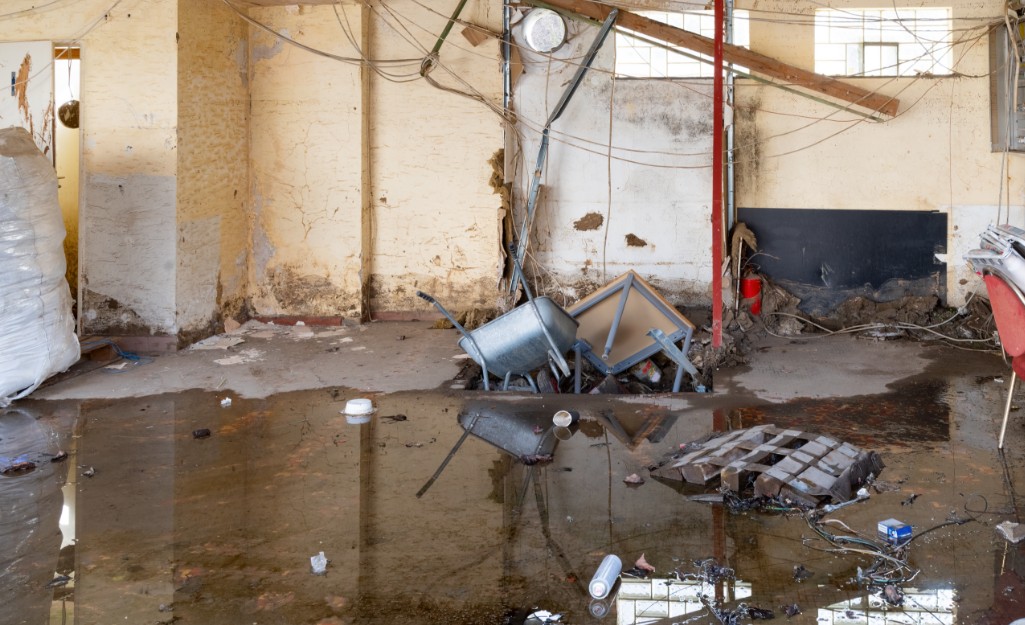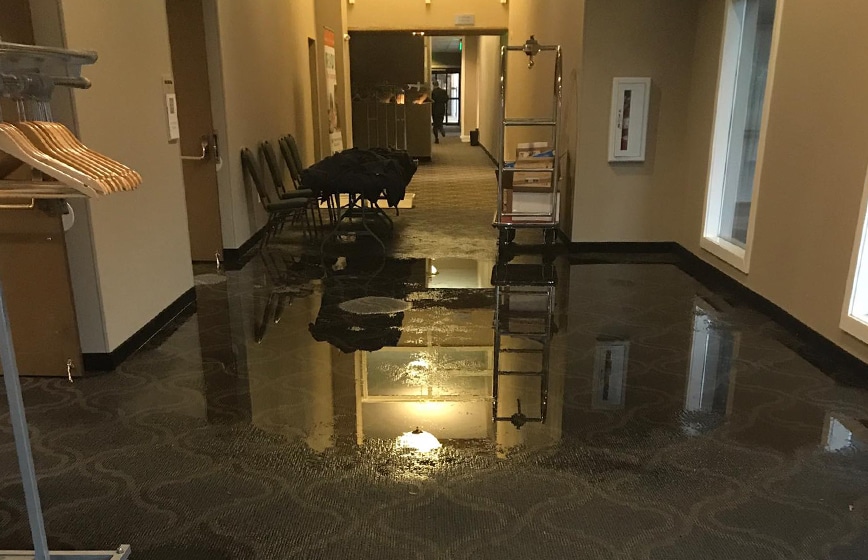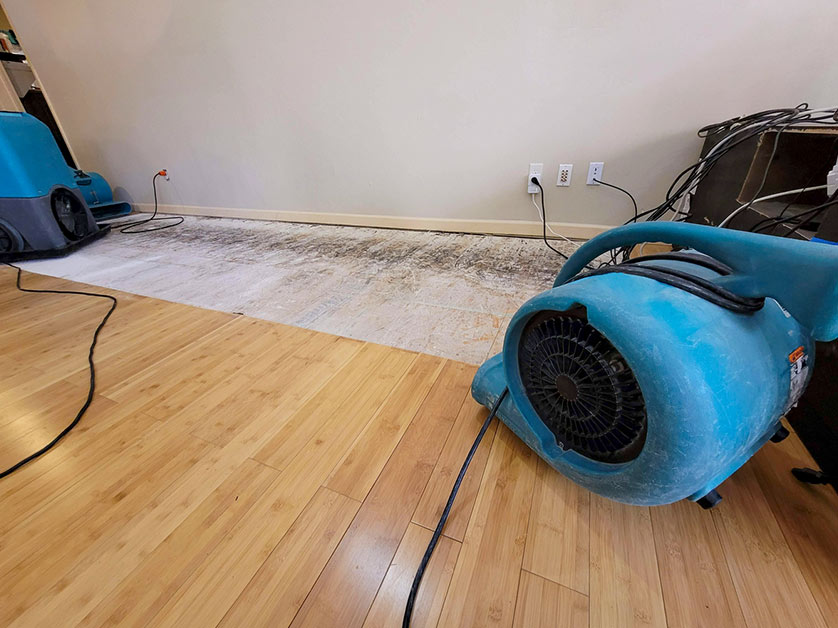Common errors to avoid when choosing Water Damage Restoration services
Wiki Article
Water Damage Restoration 101: Comprehending the Process and Expense
Water damage can strike suddenly, leaving house owners in a state of confusion. Comprehending the repair process is essential for efficient recovery. From reviewing the damage to selecting the best service supplier, each step impacts the general outcome and expense. Factors such as the sort of water damage and seriousness likewise play a substantial function. What are the details strategies made use of in restoration, and exactly how can one get ready for potential expenditures?Kinds Of Water Damage

Initial Assessment and Inspection

Water Extraction Strategies
Complying with the initial analysis, efficient water removal methods are used to minimize damage and avoid additional issues. These strategies include using customized tools such as submersible pumps and industrial-grade vacuums - Water Damage Restoration. The choice of method relies on the quantity of water existing and the kind of products impacted. For standing water, submersible pumps are usually used for fast elimination, while vacuum cleaners are suitable for removing water from rugs and upholstery. In addition, advanced approaches like water extraction mats might be utilized for hard-to-reach locations - Flood Cleanup Services. The objective is to get rid of as much water as possible, decreasing the possibility for mold growth and structural damage. Trigger and effective water extraction is necessary in the total water damage restoration processDrying Out and Dehumidification Process
Once the water extraction is total, the drying and dehumidification process comes to be vital to restoring the afflicted location. This phase commonly employs industrial-grade dehumidifiers and air movers to efficiently lower moisture degrees. The dehumidifiers attract damp air, getting rid of excess humidity, while air movers distribute air to speed up dissipation. Monitoring devices is commonly utilized to track humidity and temperature degrees, guaranteeing ideal drying problems. The period of this process can vary relying on the level of the water damage and ecological variables. It is vital to extensively completely dry all impacted products, including wall surfaces, floor covering, and home furnishings, to avoid mold development and architectural damage. Correct implementation of this action is critical for a successful restoration outcome.Cleansing and Disinfecting Afflicted Locations
Once the drying process is complete, a detailed initial assessment and assessment of influenced locations is important to determine contamination levels. Reliable cleaning strategies and suitable items have to after that be used to eliminate debris and stains. Ultimately, sanitization and disinfection methods are necessary to ensure that damaging pathogens are removed, recovering the area to a secure problemInitial Analysis and Examination
Prior to starting any type of repair efforts, a thorough first evaluation and examination of the affected areas are important for efficient cleansing and sterilizing. This procedure involves identifying the degree of water damage, determining the resource of the water invasion, and reviewing the products influenced. Inspectors generally try to find indications of mold and mildew development, architectural stability issues, and harmed valuables. The analysis additionally consists of examining moisture degrees making use of specific equipment to ensure no concealed water pockets stay, as these can bring about more complications. Recording the findings is essential for planning the following steps in the repair process. An in-depth preliminary evaluation allows remediation professionals to develop a targeted method for effective cleaning and sterilizing, eventually minimizing damage and health dangers.Cleaning Up Strategies and Products
Effective cleaning and disinfecting of water-damaged locations need a variety of strategies and items customized to the certain materials impacted. For permeable surface areas like drywall and carpeting, extraction techniques are important to eliminate excess see here now wetness, followed by deep cleaning with specialized detergents. Non-porous products such as ceramic tile or steel can be cleaned up making use of commercial-grade cleaners that efficiently get rid of pollutants. Heavy steam cleaning is one more effective method, particularly for carpets and upholstery, as it uses heats to get rid of bacteria and mold and mildew (Water Damage Restoration). Furthermore, eco-friendly items are increasingly popular for their security and effectiveness - Water Damage Restoration. Inevitably, picking the proper cleaning approaches and items not just assures instant sanitation yet additionally help in stopping additional damage and carcinogen connected with water intrusionSanitization and Disinfection Methods
When attending to water damage, correct sanitization and sanitation approaches are necessary to assure the safety and security and health of the damaged atmosphere. After initial cleansing, surface areas should be treated with ideal disinfectants to eliminate virus, mold, and germs that prosper in moist conditions. Typical techniques consist of making use of EPA-approved chemical anti-bacterials, which can be used through splashing or wiping methods. Additionally, ultraviolet (UV) light systems can successfully sanitize areas by counteracting microorganisms without extreme chemicals. The choice of technique commonly relies on the kind of products impacted and the degree of contamination. Inevitably, detailed sanitization not only recovers a safe space however likewise aids prevent future health and wellness dangers connected with remaining moisture and mold and mildew development.
Repairs and Restoration Options
Examining the damage triggered by water exposure is essential for identifying the appropriate repair work and repair choices. Property owners might encounter numerous issues, including damaged drywall, distorted flooring, and endangered architectural aspects. Relying on the extent of the damage, repair work might include changing areas of drywall, mounting brand-new flooring, or enhancing structural beams. In situations of extreme damage, full replacement of damaged products may be needed. Furthermore, professional conservators often advise making use of dampness meters to analyze surprise dampness degrees prior to choosing on the very best strategy. It is essential to act without delay to stop mold and mildew growth and additional degeneration. Choosing the appropriate choices not just recovers the property yet additionally ensures long-lasting safety and capability.Aspects Influencing Restoration Costs

The extent of water damage straight influences the restoration costs home owners can expect to sustain. Variables such as the source of the water, the duration of direct exposure, and the damaged products considerably affect pricing. For example, clean water damage from a damaged pipeline is generally less pricey to restore compared to damage brought on by sewage. In addition, the degree of contamination determines the demand for specialized cleansing and disposal solutions, even more increasing expenditures. Geographic area additionally contributes, as local labor prices and availability of reconstruction services can vary. Lastly, the necessity of the response affects expenses; quicker interventions typically result in reduce overall expenses by preventing more damage. Recognizing these variables is essential for homeowners when approximating restoration prices.
The 3 key kinds of water damage are categorized based on contamination degrees: clean water, grey water, and black water. A complete initial assessment and examination are important steps in the water damage remediation process. For standing water, completely submersible pumps are normally used for fast removal, while vacuum cleaners are excellent for removing water from carpetings and furniture. The degree of water damage directly impacts the reconstruction sets you back property owners can expect to incur. Clean water damage from a broken pipeline is usually much less pricey to bring back contrasted to damage triggered by sewage.
Report this wiki page